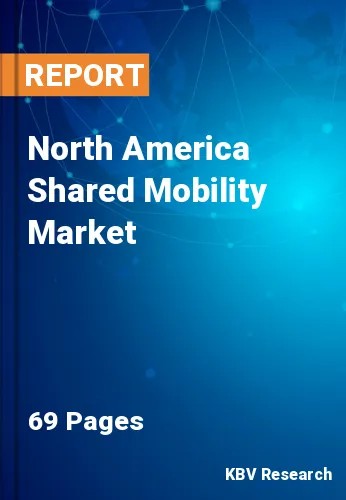The North America Shared Mobility Market would witness market growth of 4.7% CAGR during the forecast period (2022-2028).
Smart grids are energy networks that can monitor energy flows automatically and respond to changes in supply and demand as needed. Smart grids reach consumers and suppliers by giving real-time usage statistics when combined with smart metering systems.
Smart grids, which display information on supply and demand, are especially useful for integrating increasing amounts of variable renewable energy sources, such as solar and wind power, as well as new loads, such as energy storage and electric vehicle charging while maintaining system stability and efficiency. Furthermore, smart grids allow consumers who generate their own energy to react to market prices by selling excess energy back to the grid.
Smart grids enable new market actors such as aggregators and energy service firms to deliver new sorts of services to customers, allowing them to modify their use and benefit from the grid's flexibility.
The United States Census Bureau released a report today that looks at computer and internet usage trends in 2018. The report, Computer and Internet Use in the United States: 2018, analyzes trends at the national, state, and county levels using data from the American Community Survey (ACS). Over the last few decades, the use of computers has increased dramatically. The percentage of households that utilize the internet has risen over time as well. The internet has had an impact on their professional lives as well, allowing us to work from home more frequently. Data from the Current Population Survey is used to offer historical context, while data from the American Community Survey is used to emphasize more current patterns.
Smartphone ownership has exceeded all other computing device ownership. Smartphones were found in 84 percent of households, whereas 78 percent had a desktop or laptop computer. The percentage of people who own a tablet has dropped to 63 percent. Those of cities were more likely than residents of rural areas to use computers (93 percent of urban households vs. 89 percent of rural households) and to have some type of internet subscription (86 percent of urban households compared to 81 percent of rural households).
The US market dominated the North America Shared Mobility Market by Country in 2021, and would continue to be a dominant market till 2028; thereby, achieving a market value of $50,605.4 million by 2028. The Canada market is anticipated to grow at a CAGR of 7% during (2022 - 2028). Additionally, The Mexico market would showcase a CAGR of 6.1% during (2022 - 2028).
Based on Type, the market is segmented into Interconnecting, and Passive. Based on Interconnecting Type, the market is segmented into Connectors/Sockets, PCB, Switches, Relays, and Others. Based on Passive Type, the market is segmented into Capacitors, Resistors & Inductors, Transformers and Diode. Based on Application, the market is segmented into Consumer Electronics, Aerospace & Defense, IT & Telecom, Automotive, Industrial, Healthcare and Others. Based on countries, the market is segmented into U.S., Mexico, Canada, and Rest of North America.
Free Valuable Insights: The Global Shared Mobility Market is Estimated to reach $454.4 Billion by 2028, at a CAGR of 15.4%
The market research report covers the analysis of key stake holders of the market. Key companies profiled in the report include Lyft, Inc., Grab Holdings Inc. Avis Budget Group, Inc., DiDi Global Inc., Deutsche Bahn Connect GmbH (Deutsche Bahn AG), Uber Technologies, Inc., GT Gettaxi (UK) Limited, Ola Cabs (ANI Technologies Pvt. Ltd.), Share Now GmbH, and Global Car Sharing and Rental Co., Ltd.
By Service Model
By Vehicle
By Country
Our team of dedicated experts can provide you with attractive expansion opportunities for your business.

